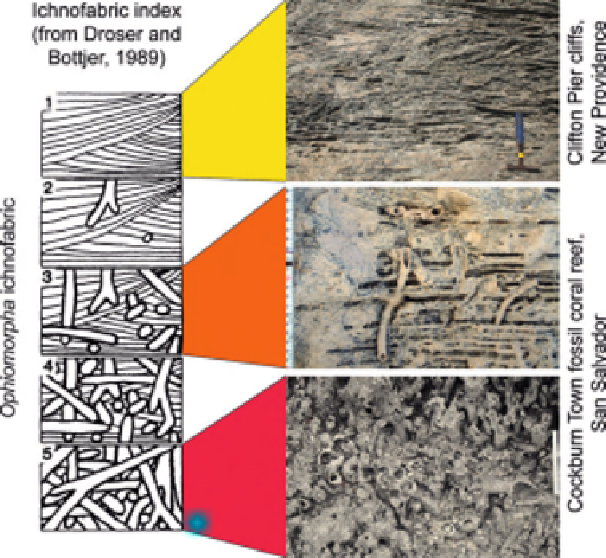Environmental Engineering Reference
In-Depth Information
exposure with lowered sea level. Therefore, to at least some degree, rhizomorphs
are ubiquitous in Quaternary Bahamian lithofacies.
5.1.1 The Skolithos Ichnofacies
In Bahamian and similar tropical carbonate settings, the
Skolithos
Ichnofacies,
as defined and summarized by
Bromley (1996)
,
Pemberton et al. (2001)
, and
McIlroy (2004)
, includes subtidal to intertidal ichnocoenoses dominated by
bioturbation and fossil burrows of callianassid shrimp. Here callianassids com-
monly have created complex and robust burrow systems that result in distinc-
tive, often maximum intensity ichnofabrics (
Fig. 10
).
As one continues seaward on the platform shelf, an increase in trails and
tracks typically occurs with increasing water depth, suggesting transition to a
Cruziana
Ichnofacies assemblage. This transition has not yet been documented
in the Bahamian rock record because of the abrupt shelf-to-slope break at the
edges of Bahamian platforms. Accordingly, little is currently known about
the deeper-water ichnology of the offshore areas.
Domination by the burrowing activities of endobenthic thalassinidean
shrimp, particularly callianassids, of carbonate-sand substrates in tropical,
FIGURE 10
Ophiomorpha
ichnofabrics in Bahamian Late Pleistocene grainstones keyed to the
scale of
Droser and Bottjer (1989)
.










Search WWH ::

Custom Search